Do you want to know if all newborns lose their hair after a few months of giving birth to them? Keep reading to know if all newborns lose their hair after a few months of giving birth to them.
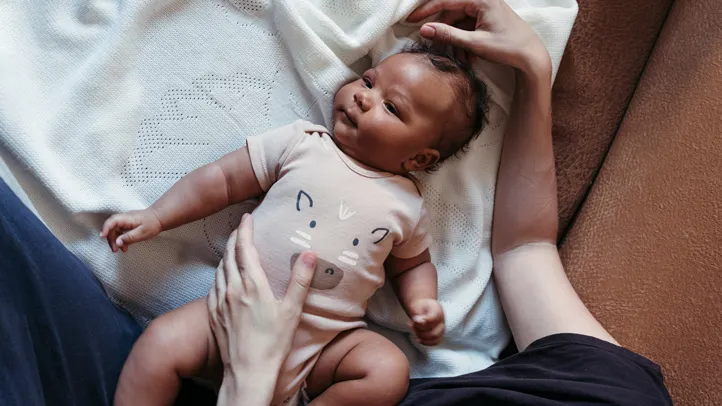
Newborn babies are known for their soft and often fine hair, which can vary in color and texture.
While many babies are born with a full head of hair, others have less noticeable hair at birth.
Furthermore, the presence and timing of hair loss in newborns can differ from one baby to another.
However, understanding this natural process can help parents know what to expect and how to care for their baby’s hair.
It’s common for some babies to lose their hair during the early months of life.
Here, you will get to know whether all newborns lose their hair and the reasons behind this phenomenon.
Do All Newborns Lose Their Hair?
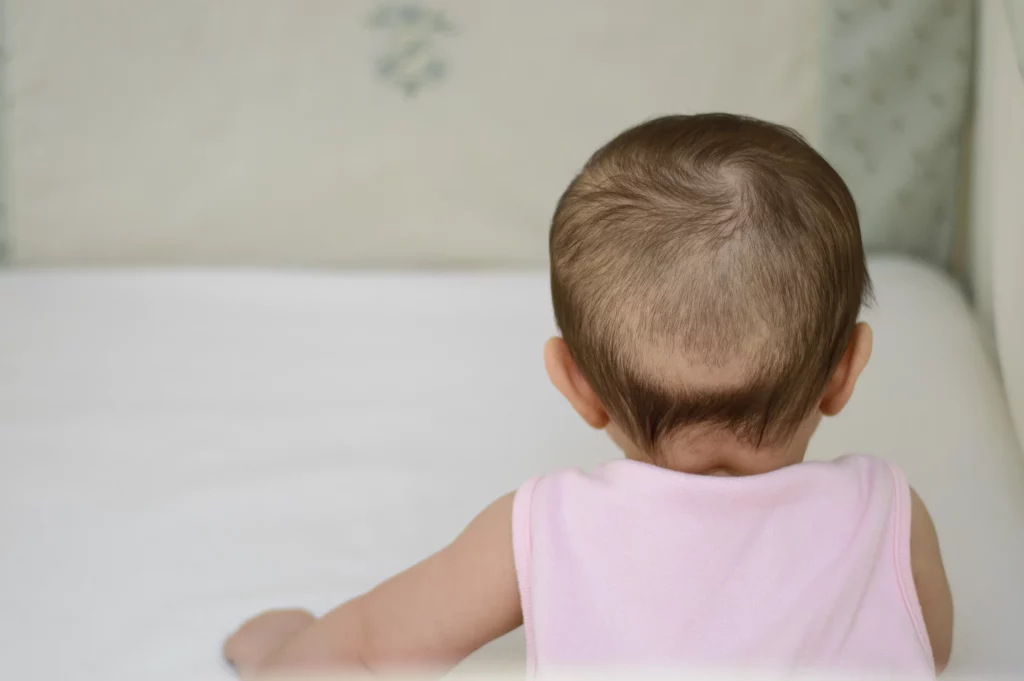
No, not all newborns lose their hair. The shedding of newborn hair, known as “lanugo,” is a common occurrence but does not happen to every baby.
Also, lanugo is the fine, soft, and often colorless hair that covers a baby’s body while they are in the womb.
Some newborns are born with a significant amount of lanugo, while others may have very little or none at all.
Furthermore, for babies who do have lanugo, it’s entirely normal for this soft hair to shed within the first few weeks to months of life.
As the lanugo sheds, it makes way for the growth of thicker, more permanent hair. However, the timeline for this transition can vary from one baby to another.
Some newborns are born with a full head of hair, and this hair may continue to grow and develop without shedding.
In addition, the presence or absence of lanugo and the timing of hair growth can vary widely among infants and is influenced by genetics and individual factors.
Whether or not a baby loses their lanugo or retains their initial hair, it’s a natural part of their development and not a cause for concern.
As they grow, their hair may continue to change in texture, color, and thickness, and this variation is entirely normal.
Reasons for Hair Loss in Some Newborns
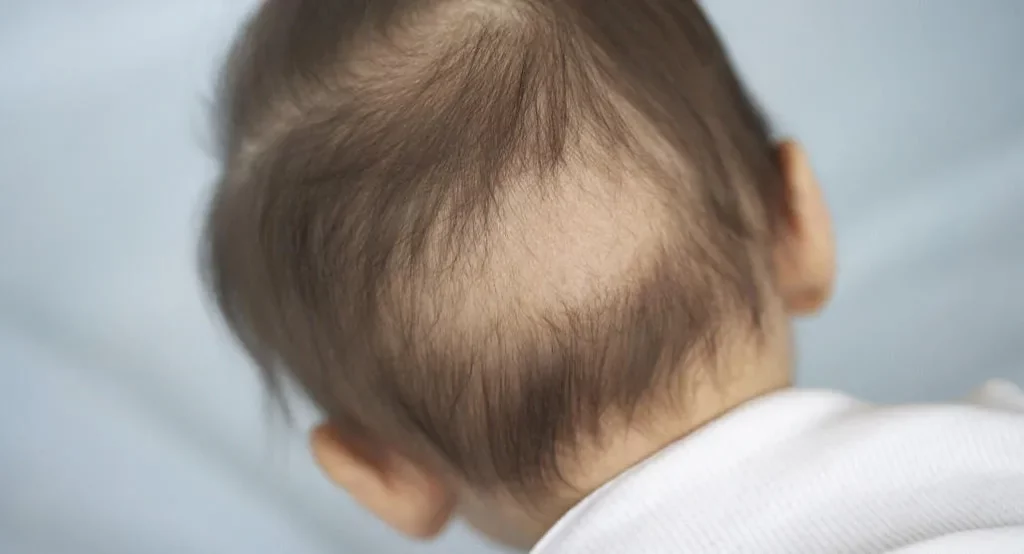
For those newborns who do experience hair loss, there are several reasons behind this phenomenon:
1. Lanugo Shedding
Newborns are often covered in a fine layer of hair known as lanugo.
In addition, lanugo serves as a protective layer in the womb and typically begins to shed within the first few weeks after birth.
Furthermore, this shedding can result in the appearance of hair loss.
2. Friction
The constant contact between a baby’s head and bedding, clothing, or swaddling materials can create friction.
Also, this friction can contribute to the loss of fine hair, particularly in areas where there is consistent contact.
3. Hormonal Changes
Hormonal changes in a baby’s body, particularly the decrease in maternal hormones after birth, can influence hair growth patterns.
Also, this hormonal shift can contribute to temporary hair loss.
4. Growth Cycles
Hair growth occurs in cycles, including periods of growth and rest.
Newborns may experience a phase of hair shedding as they transition from the prenatal to postnatal environment.
5. Genetics
A baby’s hair growth pattern can be influenced by genetics. Also, some babies may inherit genes that result in hair loss or delayed hair growth.
Patterns of Hair Loss in Some Newborns
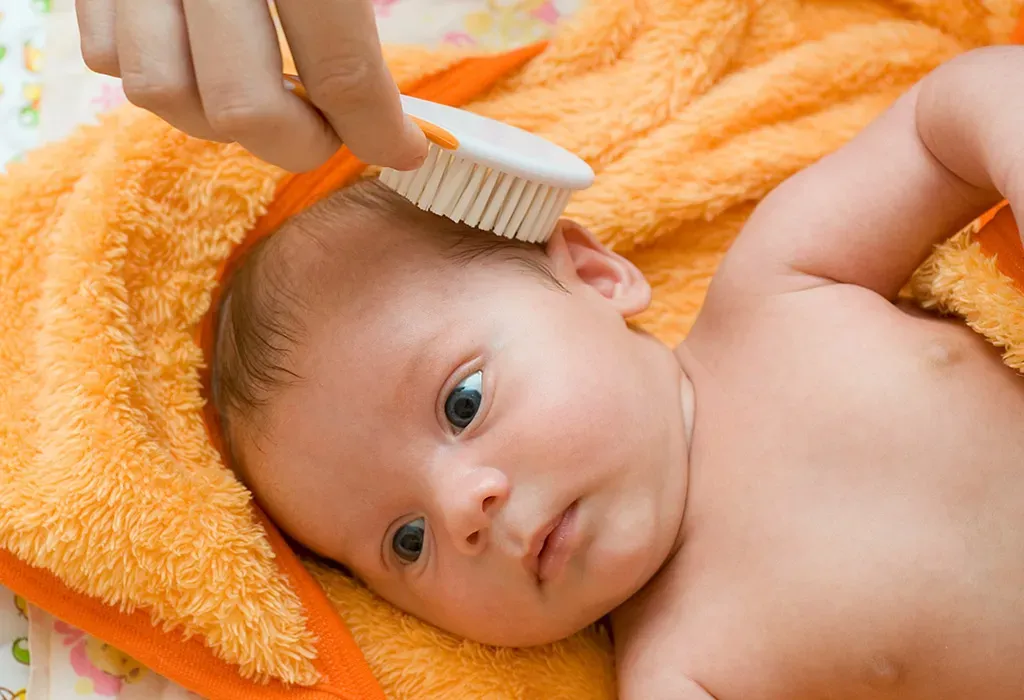
If hair loss occurs in newborns, it often follows a particular pattern:
1. Frontal Hair Loss
Hair loss in the front of the scalp is common, and it can create the appearance of a receding hairline.
2. Thinning at the Crown
Some babies may experience thinning or loss of hair at the crown of their heads.
3. Generalized Thinning
In some cases, hair loss may be more evenly distributed across the scalp, resulting in overall thinning.
4. Regrowth
The good news is that hair loss in newborns is typically temporary.
As babies grow and their bodies adjust to the postnatal environment, new hair usually begins to grow.
Also, the timing of regrowth can vary from one baby to another, but most infants start to regrow their hair within a few months.
When Does Baby Hair Grow Back After Falling Out
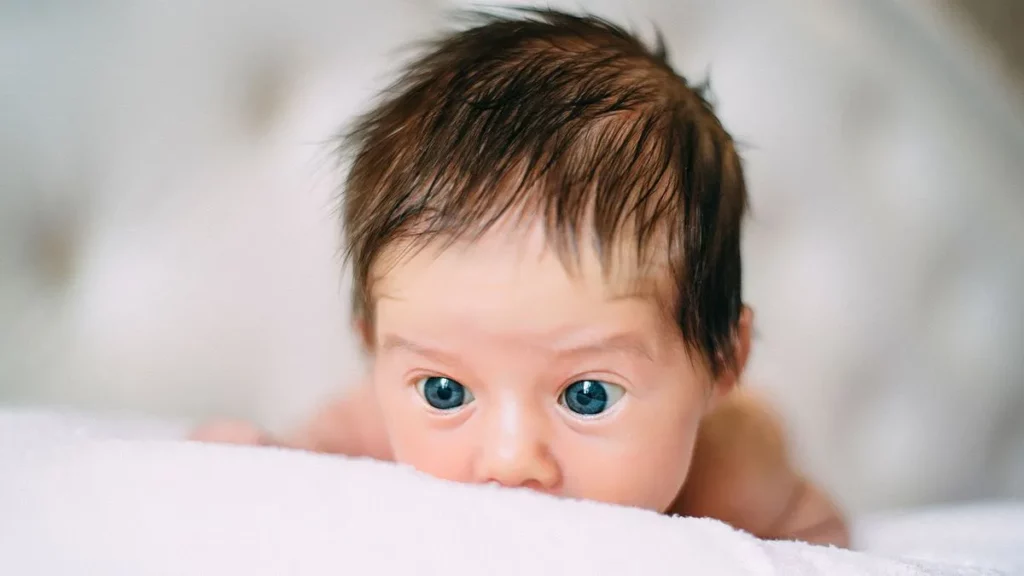
After a newborn’s initial hair, known as lanugo, falls out, it can take a few weeks to several months for new hair to grow in.
Also, the exact timeline for the regrowth of baby hair varies from one infant to another. Here are some general guidelines:
1. Varies by Baby
The rate at which new hair grows can differ significantly among babies.
Some may start growing new hair within a few weeks, while it might take longer for others.
2. Around Three to Six Months
On average, many babies begin to grow new hair between three to six months of age.
However, this is a rough estimate and not a strict rule.
3. Different Texture and Color
The new hair that grows in may have a different texture and color compared to the lanugo. Also, it could be finer or thicker and might have a different shade.
4. Genetics Play a Role
Genetics also influence the growth pattern and appearance of a baby’s hair. Family history can provide some insights into what to expect.
5. Hair Growth Continues
Over time, as your baby grows, their hair will continue to develop and might change in texture and color.
In addition, some infants might have a full head of hair early on, while others may take more time to develop a head of hair.
In conclusion, not all newborns lose their hair, but it is a common occurrence for some infants.
The shedding of fine lanugo hair, friction, hormonal changes, growth cycles, and genetics can all contribute to hair loss in newborns.
Parents should remember that this hair loss is usually temporary, and new hair will gradually grow in as the baby continues to develop.
Related Searches: